IoT in Agriculture
Internet of Things in agriculture refers to the use of smart devices and sensors to monitor the farming process, from planting to harvesting and distribution. IoT technology for agriculture allows farmers to automate real-time data collection, increase production volumes, reduce costs, improve efficiency, and make wise agricultural decisions1. IoT devices can connect and interact with each other and the internet, and can send alerts or automate other devices, such as sprinklers or tractors.
IoT technology has several applications in agriculture, including field automation of crop and animal production and automation of agriculture and food supply chain. Such applications offer farmers with data-enabled and practical means for interactively managing their production in a more effective and efficient way.
IoT devices can be used to monitor crops, survey and map fields, and provide data to farmers for rational farm management plans to save both time and money. For instance, IoT devices can be used to monitor soil moisture, temperature, and nutrient levels, and provide real-time data to farmers, enabling them to make informed decisions about irrigation, fertilization, and other farming practices.
IoT technology can also be used to monitor the health and well-being of livestock, and to track the location and movement of animals. This can help farmers to identify and treat sick animals more quickly, and to prevent the spread of diseases.
Overall, IoT technology has the potential to revolutionize the agriculture industry by enabling farmers to make data-driven decisions, optimize their production processes, and improve the quality and quantity of their yields1.
Agriculture & the Internet of Things
Internet of Things (loT) or internet-enabled communications was simply explained by Jacob Morgan who stated that broadband Internet is widely available, and more devices come with Wi-Fi capabilities and sensors with them. The devices create a ‘storm’ around a common Wi-Fi.
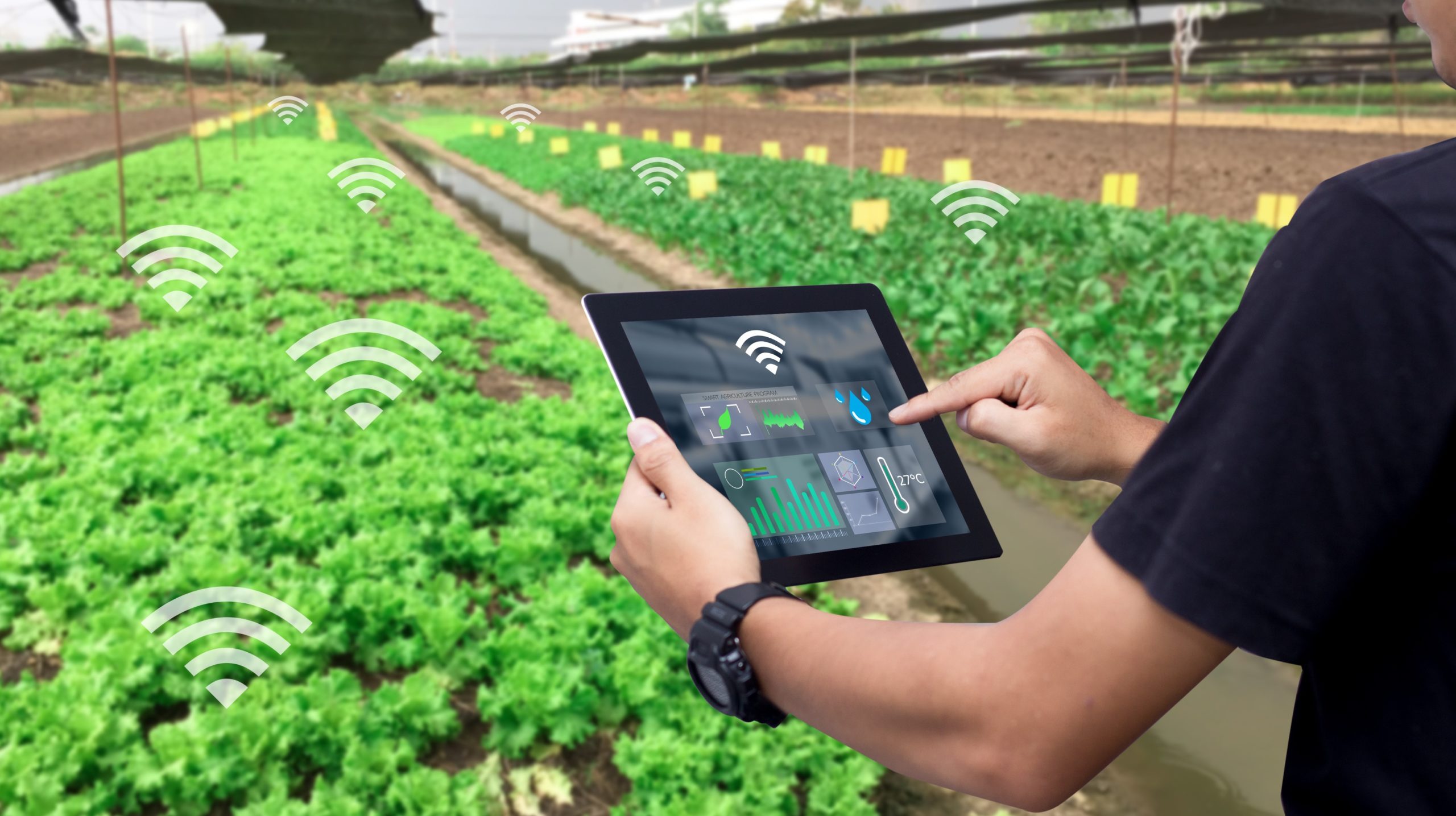 In agriculture loT applications include farm vehicle tracking, livestock monitoring, storage monitoring and other farm operations. The diagram on the right provides a visual of this application.
In this loT model, sensors can be deployed in the farm – to the ground, in water, in vehicles etc. to collect data. The collected data is stored in the cloud system or server and accessed by the farmer via the internet or their mobile phones.
In some cases, the farmer can remotely control the activities in the farm due to this connectivity. Is this possible? Yes, remember one of the e-Agriculture webinars on Nano Ganesh explained the mobile-based remote controller for water pumps. Also, we covered the use of loT by the Hello Tractor, where they developed a low-cost monitoring device which is placed on a tractor and allows them to be on call like an uber taxi and in this way farmers can share resources and fully utilize tractors.
loT has been applied in agriculture in general, in arable farming, in fisheries and aquaculture, in animal food consumption, in agri-food supply chain, in green house horticulture and livestock farming.
In agriculture loT applications include farm vehicle tracking, livestock monitoring, storage monitoring and other farm operations. The diagram on the right provides a visual of this application.
In this loT model, sensors can be deployed in the farm – to the ground, in water, in vehicles etc. to collect data. The collected data is stored in the cloud system or server and accessed by the farmer via the internet or their mobile phones.
In some cases, the farmer can remotely control the activities in the farm due to this connectivity. Is this possible? Yes, remember one of the e-Agriculture webinars on Nano Ganesh explained the mobile-based remote controller for water pumps. Also, we covered the use of loT by the Hello Tractor, where they developed a low-cost monitoring device which is placed on a tractor and allows them to be on call like an uber taxi and in this way farmers can share resources and fully utilize tractors.
loT has been applied in agriculture in general, in arable farming, in fisheries and aquaculture, in animal food consumption, in agri-food supply chain, in green house horticulture and livestock farming.
 In agriculture loT applications include farm vehicle tracking, livestock monitoring, storage monitoring and other farm operations. The diagram on the right provides a visual of this application.
In this loT model, sensors can be deployed in the farm – to the ground, in water, in vehicles etc. to collect data. The collected data is stored in the cloud system or server and accessed by the farmer via the internet or their mobile phones.
In some cases, the farmer can remotely control the activities in the farm due to this connectivity. Is this possible? Yes, remember one of the e-Agriculture webinars on Nano Ganesh explained the mobile-based remote controller for water pumps. Also, we covered the use of loT by the Hello Tractor, where they developed a low-cost monitoring device which is placed on a tractor and allows them to be on call like an uber taxi and in this way farmers can share resources and fully utilize tractors.
loT has been applied in agriculture in general, in arable farming, in fisheries and aquaculture, in animal food consumption, in agri-food supply chain, in green house horticulture and livestock farming.
In agriculture loT applications include farm vehicle tracking, livestock monitoring, storage monitoring and other farm operations. The diagram on the right provides a visual of this application.
In this loT model, sensors can be deployed in the farm – to the ground, in water, in vehicles etc. to collect data. The collected data is stored in the cloud system or server and accessed by the farmer via the internet or their mobile phones.
In some cases, the farmer can remotely control the activities in the farm due to this connectivity. Is this possible? Yes, remember one of the e-Agriculture webinars on Nano Ganesh explained the mobile-based remote controller for water pumps. Also, we covered the use of loT by the Hello Tractor, where they developed a low-cost monitoring device which is placed on a tractor and allows them to be on call like an uber taxi and in this way farmers can share resources and fully utilize tractors.
loT has been applied in agriculture in general, in arable farming, in fisheries and aquaculture, in animal food consumption, in agri-food supply chain, in green house horticulture and livestock farming. Benefits
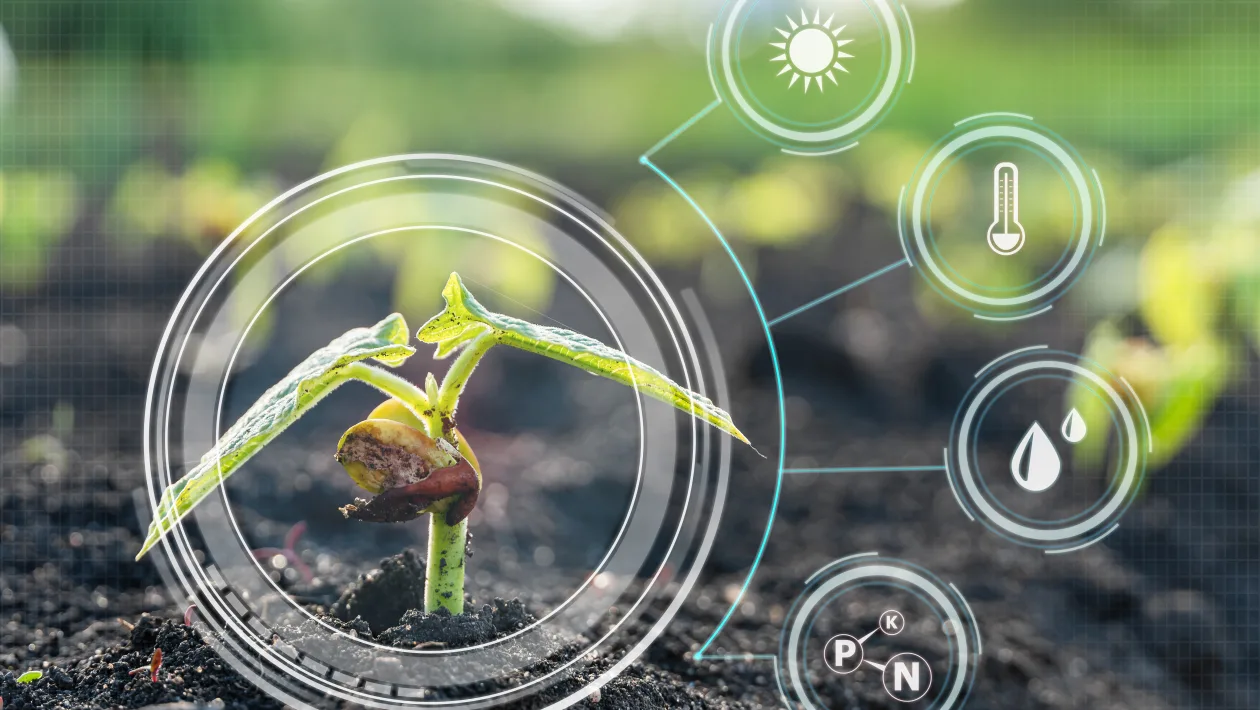 The benefits that farmers get from applying loT is two pronged; firstly farmers can optimize the use of inputs and also farmers can decrease production costs.
Furthermore, the other benefits were also itemized below:-
The benefits that farmers get from applying loT is two pronged; firstly farmers can optimize the use of inputs and also farmers can decrease production costs.
Furthermore, the other benefits were also itemized below:-
- Saves cost by effectively using inputs
- Better monitoring of crops and avoiding crop losses through disease or adverse weather
- Help in optimizing water use Better planning of farm activities
 Excelled efficiency
Today’s agriculture is in a race. Farmers have to grow more product in deteriorating soil, declining land availability and increasing weather fluctuation. IoT-enabled agriculture allows farmers to monitor their product and conditions in real-time. They get insights fast, can predict issues before they happen and make informed decisions on how to avoid them. Additionally, IoT solutions in agriculture introduce automation, for example, demand-based irrigation, fertilizing and robot harvesting.
Excelled efficiency
Today’s agriculture is in a race. Farmers have to grow more product in deteriorating soil, declining land availability and increasing weather fluctuation. IoT-enabled agriculture allows farmers to monitor their product and conditions in real-time. They get insights fast, can predict issues before they happen and make informed decisions on how to avoid them. Additionally, IoT solutions in agriculture introduce automation, for example, demand-based irrigation, fertilizing and robot harvesting.
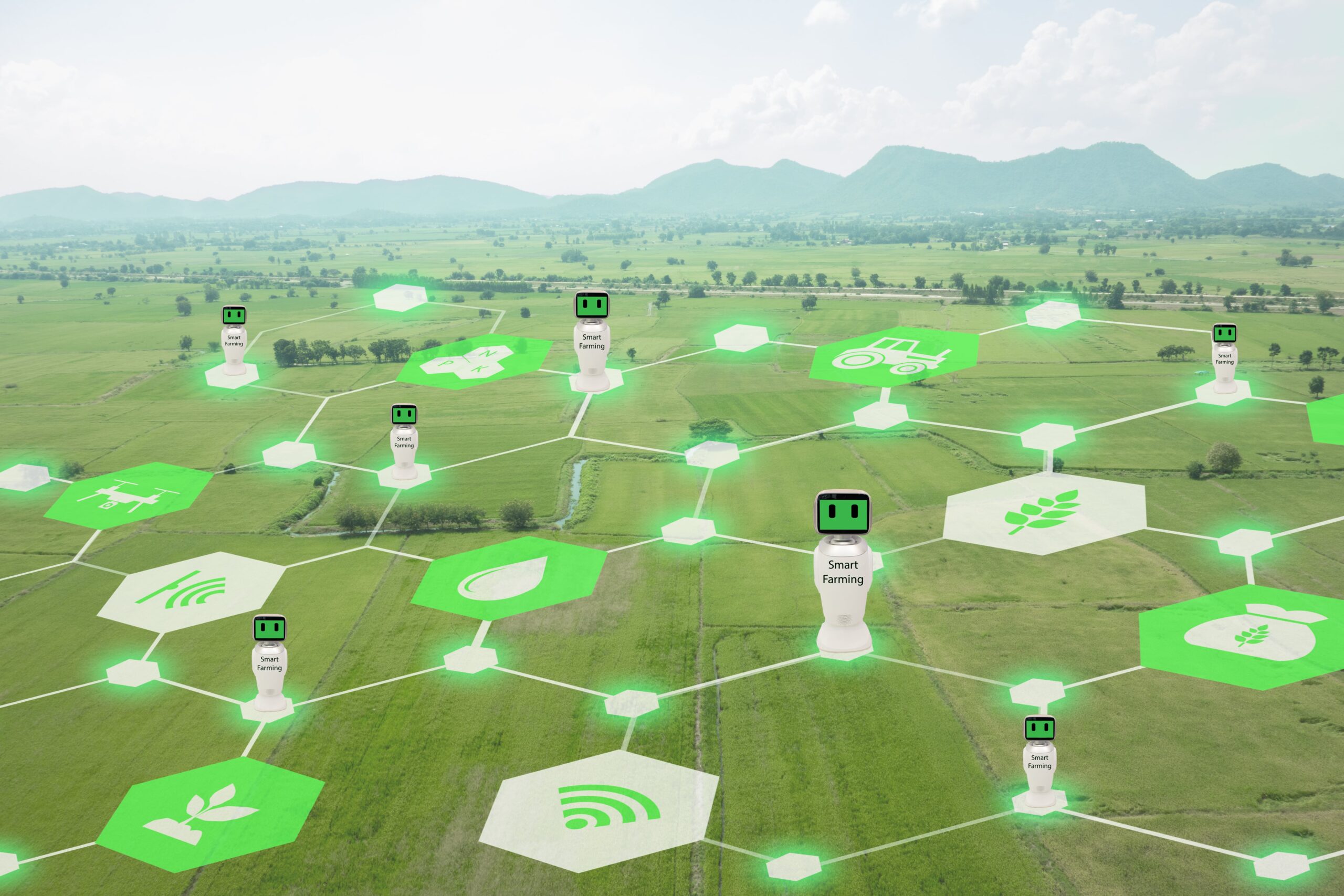 Expansion
By the time we have 9 billion people on the planet, 70% of them will live in urban areas. IoT-based greenhouses and hydroponic systems enable short food supply chain and should be able to feed these people with fresh fruits and veggies. Smart closed-cycle agricultural systems allow growing food basically everywhere—in supermarkets, on skyscrapers’ walls and rooftops, in shipping containers and, of course, in the comfort of everyone’s home.
Expansion
By the time we have 9 billion people on the planet, 70% of them will live in urban areas. IoT-based greenhouses and hydroponic systems enable short food supply chain and should be able to feed these people with fresh fruits and veggies. Smart closed-cycle agricultural systems allow growing food basically everywhere—in supermarkets, on skyscrapers’ walls and rooftops, in shipping containers and, of course, in the comfort of everyone’s home.
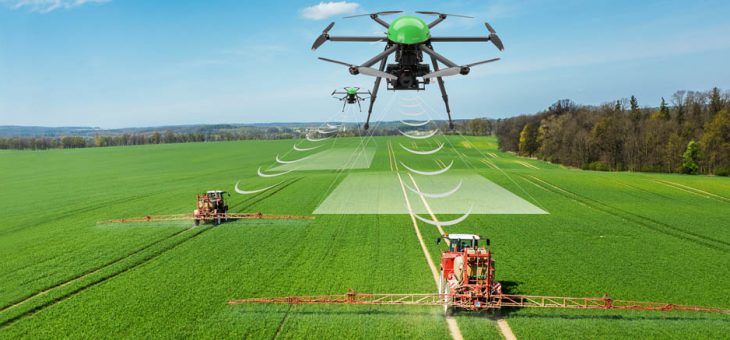 Reduced resources
Plenty of ag IoT solutions are focused on optimizing the use of resources—water, energy, land. Precision farming using IoT relies on the data collected from diverse sensors in the field which helps farmers accurately allocate just enough resources to within one plant.
Reduced resources
Plenty of ag IoT solutions are focused on optimizing the use of resources—water, energy, land. Precision farming using IoT relies on the data collected from diverse sensors in the field which helps farmers accurately allocate just enough resources to within one plant.
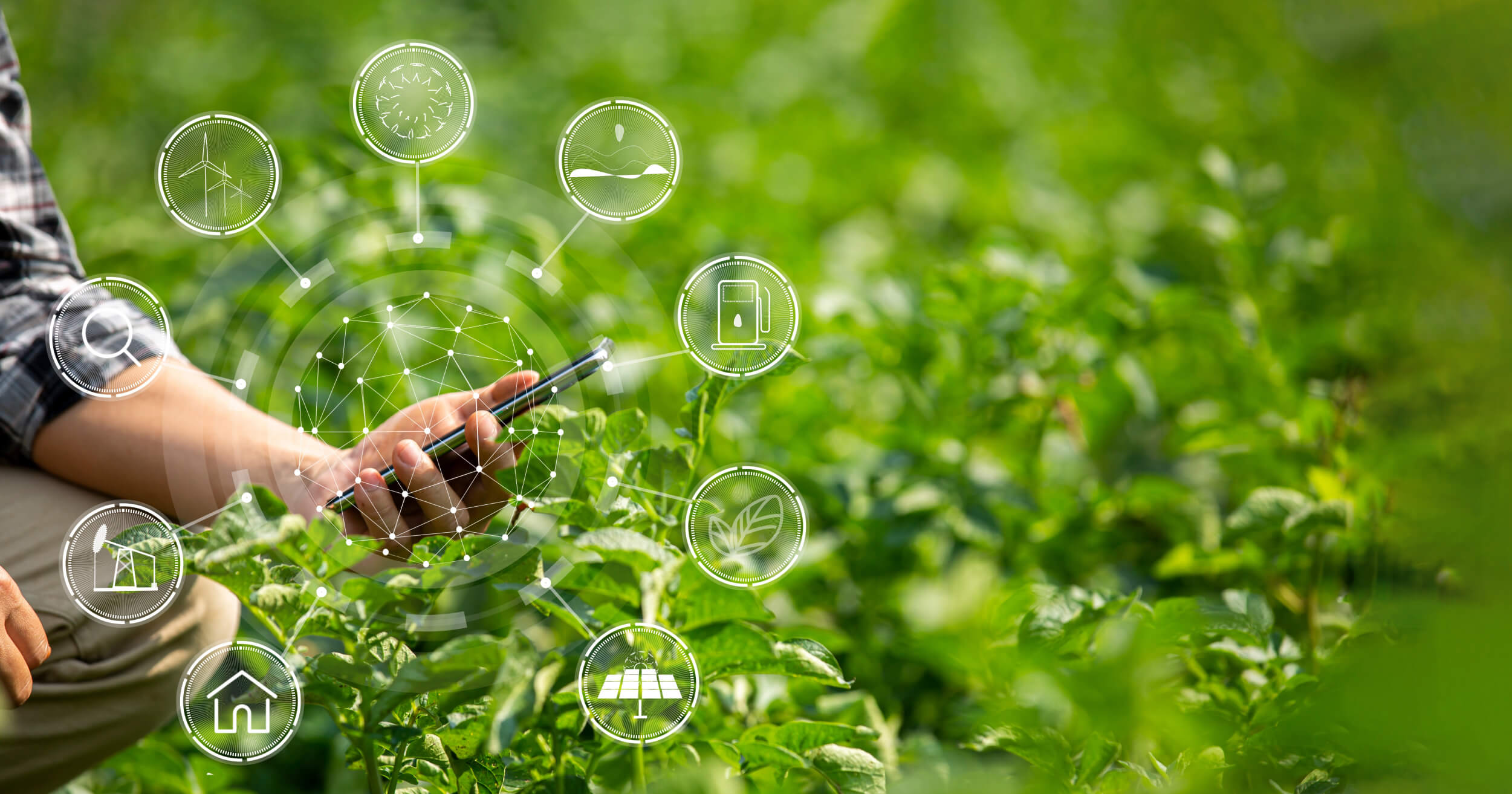 Cleaner process
Smart farming using IoT is a true way to reduce the usage of pesticides and fertilizers. Not only does precision farming help producers save water and energy and make farming greener but also significantly scales down on the use of pesticides and fertilizer. This approach allows getting a cleaner and more organic final product compared to traditional agricultural methods.
Cleaner process
Smart farming using IoT is a true way to reduce the usage of pesticides and fertilizers. Not only does precision farming help producers save water and energy and make farming greener but also significantly scales down on the use of pesticides and fertilizer. This approach allows getting a cleaner and more organic final product compared to traditional agricultural methods.
 Agility
One of the benefits of using IoT in agriculture is the increased agility of the processes. Thanks to real-time monitoring and prediction systems, farmers can quickly respond to any significant change in weather, humidity, air quality as well as the health of each crop or soil in the field. In the conditions of extreme weather changes, new capabilities help agriculture professionals save the crops.
Agility
One of the benefits of using IoT in agriculture is the increased agility of the processes. Thanks to real-time monitoring and prediction systems, farmers can quickly respond to any significant change in weather, humidity, air quality as well as the health of each crop or soil in the field. In the conditions of extreme weather changes, new capabilities help agriculture professionals save the crops.
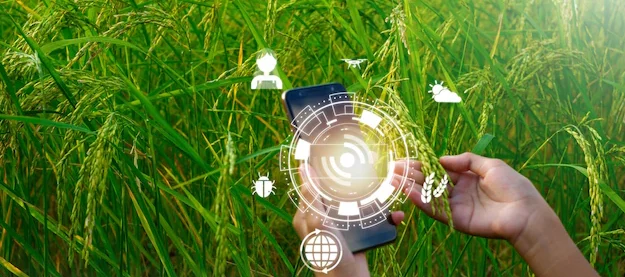 Improved product quality
Data-driven agriculture helps both grow more and better products. Using soil and crop sensors, aerial drone monitoring and farm mapping, farmers better understand detailed dependencies between the conditions and the quality of the crops.
Using connected systems, they can recreate the best conditions and increase the nutritional value of the products.
Improved product quality
Data-driven agriculture helps both grow more and better products. Using soil and crop sensors, aerial drone monitoring and farm mapping, farmers better understand detailed dependencies between the conditions and the quality of the crops.
Using connected systems, they can recreate the best conditions and increase the nutritional value of the products. Challenges
Smart agriculture system using IoT and big data technology could be the savior for the whole industry. But integrating technology in traditional agricultural processes has not been without its own problems.
Connectivity
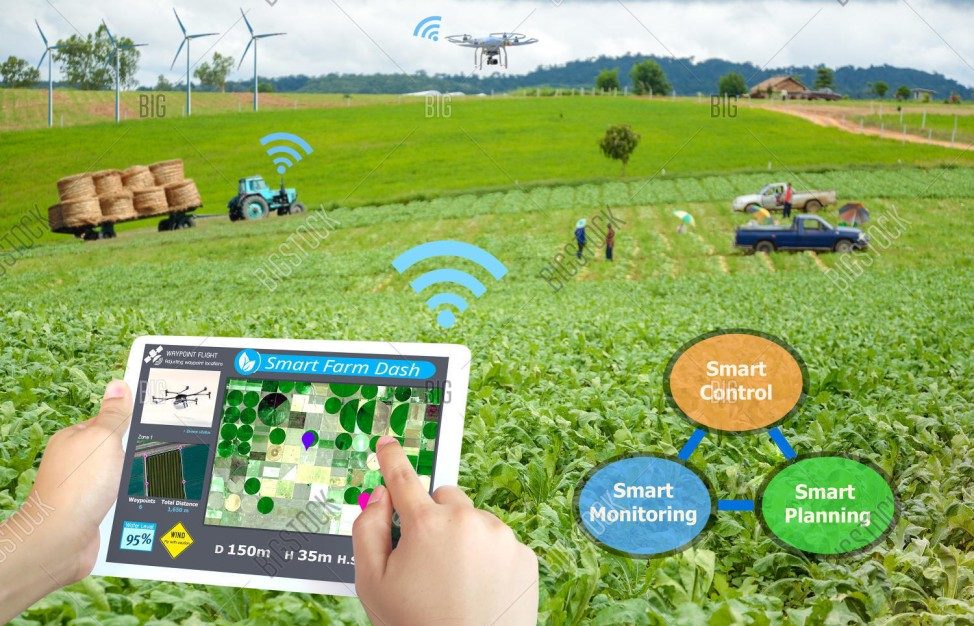 You need to provide connectivity throughout the agricultural environment—fields, storehouses, barns, greenhouses, etc. to make an IoT system work. And this is a lot of space to work with. Ideally, it should also be a reliable uninterrupted connection which could withstand severe weather events and open space conditions.
Unfortunately, the connectivity still poses a problem in the Internet of Things in general, as diverse systems use different protocols and data transmission methods. Hopefully, attempts to regulate this area, introduce standards as well as the development of 5G technology and the space-based Internet can soon solve this problem and provide fast and reliable Internet connection for every space regardless of its size and conditions.
Design and durability
You need to provide connectivity throughout the agricultural environment—fields, storehouses, barns, greenhouses, etc. to make an IoT system work. And this is a lot of space to work with. Ideally, it should also be a reliable uninterrupted connection which could withstand severe weather events and open space conditions.
Unfortunately, the connectivity still poses a problem in the Internet of Things in general, as diverse systems use different protocols and data transmission methods. Hopefully, attempts to regulate this area, introduce standards as well as the development of 5G technology and the space-based Internet can soon solve this problem and provide fast and reliable Internet connection for every space regardless of its size and conditions.
Design and durability
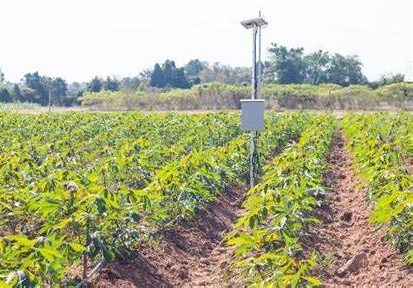 Any IoT system used in agriculture should be able to handle not only connectivity, but the conditions of outdoor spaces. Drones, portable sensors, IoT in smart grid and weather monitoring stations should have an uncomplicated yet functional design and a certain level of robustness to “work in the farm.” Not to mention the complexity and peculiarity of designing an IoT product in general.
Limited resources and time
The role of IoT in agriculture is very important, though the integration of smart technology in this area takes place in the context of a constantly changing environment and lack of time. The companies who design and develop IoT for agriculture have to take into consideration rapid climate change and emerging weather extremes, work with limited land availability and unfavorable factors like dying pollinators.
Any IoT system used in agriculture should be able to handle not only connectivity, but the conditions of outdoor spaces. Drones, portable sensors, IoT in smart grid and weather monitoring stations should have an uncomplicated yet functional design and a certain level of robustness to “work in the farm.” Not to mention the complexity and peculiarity of designing an IoT product in general.
Limited resources and time
The role of IoT in agriculture is very important, though the integration of smart technology in this area takes place in the context of a constantly changing environment and lack of time. The companies who design and develop IoT for agriculture have to take into consideration rapid climate change and emerging weather extremes, work with limited land availability and unfavorable factors like dying pollinators.
 You need to provide connectivity throughout the agricultural environment—fields, storehouses, barns, greenhouses, etc. to make an IoT system work. And this is a lot of space to work with. Ideally, it should also be a reliable uninterrupted connection which could withstand severe weather events and open space conditions.
Unfortunately, the connectivity still poses a problem in the Internet of Things in general, as diverse systems use different protocols and data transmission methods. Hopefully, attempts to regulate this area, introduce standards as well as the development of 5G technology and the space-based Internet can soon solve this problem and provide fast and reliable Internet connection for every space regardless of its size and conditions.
Design and durability
You need to provide connectivity throughout the agricultural environment—fields, storehouses, barns, greenhouses, etc. to make an IoT system work. And this is a lot of space to work with. Ideally, it should also be a reliable uninterrupted connection which could withstand severe weather events and open space conditions.
Unfortunately, the connectivity still poses a problem in the Internet of Things in general, as diverse systems use different protocols and data transmission methods. Hopefully, attempts to regulate this area, introduce standards as well as the development of 5G technology and the space-based Internet can soon solve this problem and provide fast and reliable Internet connection for every space regardless of its size and conditions.
Design and durability
 Any IoT system used in agriculture should be able to handle not only connectivity, but the conditions of outdoor spaces. Drones, portable sensors, IoT in smart grid and weather monitoring stations should have an uncomplicated yet functional design and a certain level of robustness to “work in the farm.” Not to mention the complexity and peculiarity of designing an IoT product in general.
Limited resources and time
The role of IoT in agriculture is very important, though the integration of smart technology in this area takes place in the context of a constantly changing environment and lack of time. The companies who design and develop IoT for agriculture have to take into consideration rapid climate change and emerging weather extremes, work with limited land availability and unfavorable factors like dying pollinators.
Any IoT system used in agriculture should be able to handle not only connectivity, but the conditions of outdoor spaces. Drones, portable sensors, IoT in smart grid and weather monitoring stations should have an uncomplicated yet functional design and a certain level of robustness to “work in the farm.” Not to mention the complexity and peculiarity of designing an IoT product in general.
Limited resources and time
The role of IoT in agriculture is very important, though the integration of smart technology in this area takes place in the context of a constantly changing environment and lack of time. The companies who design and develop IoT for agriculture have to take into consideration rapid climate change and emerging weather extremes, work with limited land availability and unfavorable factors like dying pollinators. IoT in Agriculture
Applications
There are numerous examples that show how to use IoT in agriculture from versatile data analytics and management systems to futuristic robot pollinators. This singled out several IoT applications in agriculture across vehicles, ag spaces and operations and name a few exciting projects in each category.
 Ag vehicles
In general, application of ag vehicles is the core of productive agriculture. Using smart vehicles significantly increases this efficiency and drives automation to traditional farming.
Deere & Co’s connected combines and tractors are a good example. Earlier this year, these vehicles have drawn a lot of attention from the visitors of the CES 2019, and not just because of the enormous size and catchy green color, but for the technology under the hood.
Deere’s vehicles are equipped with sensors, computer vision, extremely precise (less than one inch) GPS and machine learning to enable self-driving and precision farming capabilities. These machines still require an operator, however, thanks to the technology, it doesn’t need to be a highly qualified ag vehicle driver.
Ag vehicles
In general, application of ag vehicles is the core of productive agriculture. Using smart vehicles significantly increases this efficiency and drives automation to traditional farming.
Deere & Co’s connected combines and tractors are a good example. Earlier this year, these vehicles have drawn a lot of attention from the visitors of the CES 2019, and not just because of the enormous size and catchy green color, but for the technology under the hood.
Deere’s vehicles are equipped with sensors, computer vision, extremely precise (less than one inch) GPS and machine learning to enable self-driving and precision farming capabilities. These machines still require an operator, however, thanks to the technology, it doesn’t need to be a highly qualified ag vehicle driver.
 Drones
UAV or simply drones have also gained popularity in the industry. In most cases, drones work as an IoT-based monitoring system in smart agriculture, as the tools for farm mapping and on-demand irrigation and pesticide treatment.
Red Dot awardee, Xaircraft P30 is an autonomous plant protection drone. It uses advanced algorithms for outstanding flight capabilities and precise chemical spraying, which helps reduce up to 30% of pesticide material and save 90% of water.
There are also smaller drones which, however, make a big job—pollination. Seeing the alarming mass beehive collapses and a significant decrease of the bee population, some companies decided to focus on creating microdrones that could perform bee functions in agriculture. Walmart, for example, has recently filed a patent for a robot bee, and Harvard University has been teaching their RoboBees to swim underwater.
Drones
UAV or simply drones have also gained popularity in the industry. In most cases, drones work as an IoT-based monitoring system in smart agriculture, as the tools for farm mapping and on-demand irrigation and pesticide treatment.
Red Dot awardee, Xaircraft P30 is an autonomous plant protection drone. It uses advanced algorithms for outstanding flight capabilities and precise chemical spraying, which helps reduce up to 30% of pesticide material and save 90% of water.
There are also smaller drones which, however, make a big job—pollination. Seeing the alarming mass beehive collapses and a significant decrease of the bee population, some companies decided to focus on creating microdrones that could perform bee functions in agriculture. Walmart, for example, has recently filed a patent for a robot bee, and Harvard University has been teaching their RoboBees to swim underwater.
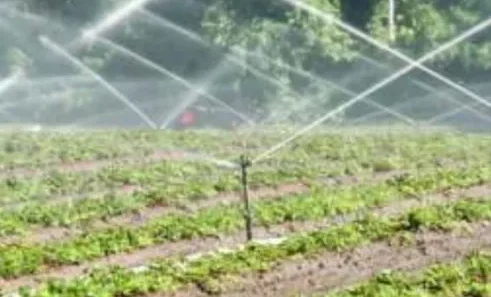 Smart sprinklers, lights, coolers, heaters
Implementation of IoT in agriculture is not only the way to boost productivity and cut costs but also one of the primary measures to reduce the carbon footprint associated with farming and preserve energy and water resources.
For instance, automated irrigation based on the use of smart sprinklers helps farmers significantly reduce water consumption and thus makes agriculture more sustainable. Connected coolers and heaters in storage and transportation facilities create better preserving conditions for the product and help reduce waste. Intelligent LED lighting automatically adjusts to the changing conditions and ensures every part of a greenhouse or storage space gets the right amount of light.
Digital Lumens produces just the kind of intelligent LEDs which facilitate energy usage monitoring and demonstrate agricultural automation using IoT in action. Combined with remote control and data analytics features, this solution provides higher efficiency of managing storage and transportation assets.
Smart sprinklers, lights, coolers, heaters
Implementation of IoT in agriculture is not only the way to boost productivity and cut costs but also one of the primary measures to reduce the carbon footprint associated with farming and preserve energy and water resources.
For instance, automated irrigation based on the use of smart sprinklers helps farmers significantly reduce water consumption and thus makes agriculture more sustainable. Connected coolers and heaters in storage and transportation facilities create better preserving conditions for the product and help reduce waste. Intelligent LED lighting automatically adjusts to the changing conditions and ensures every part of a greenhouse or storage space gets the right amount of light.
Digital Lumens produces just the kind of intelligent LEDs which facilitate energy usage monitoring and demonstrate agricultural automation using IoT in action. Combined with remote control and data analytics features, this solution provides higher efficiency of managing storage and transportation assets.
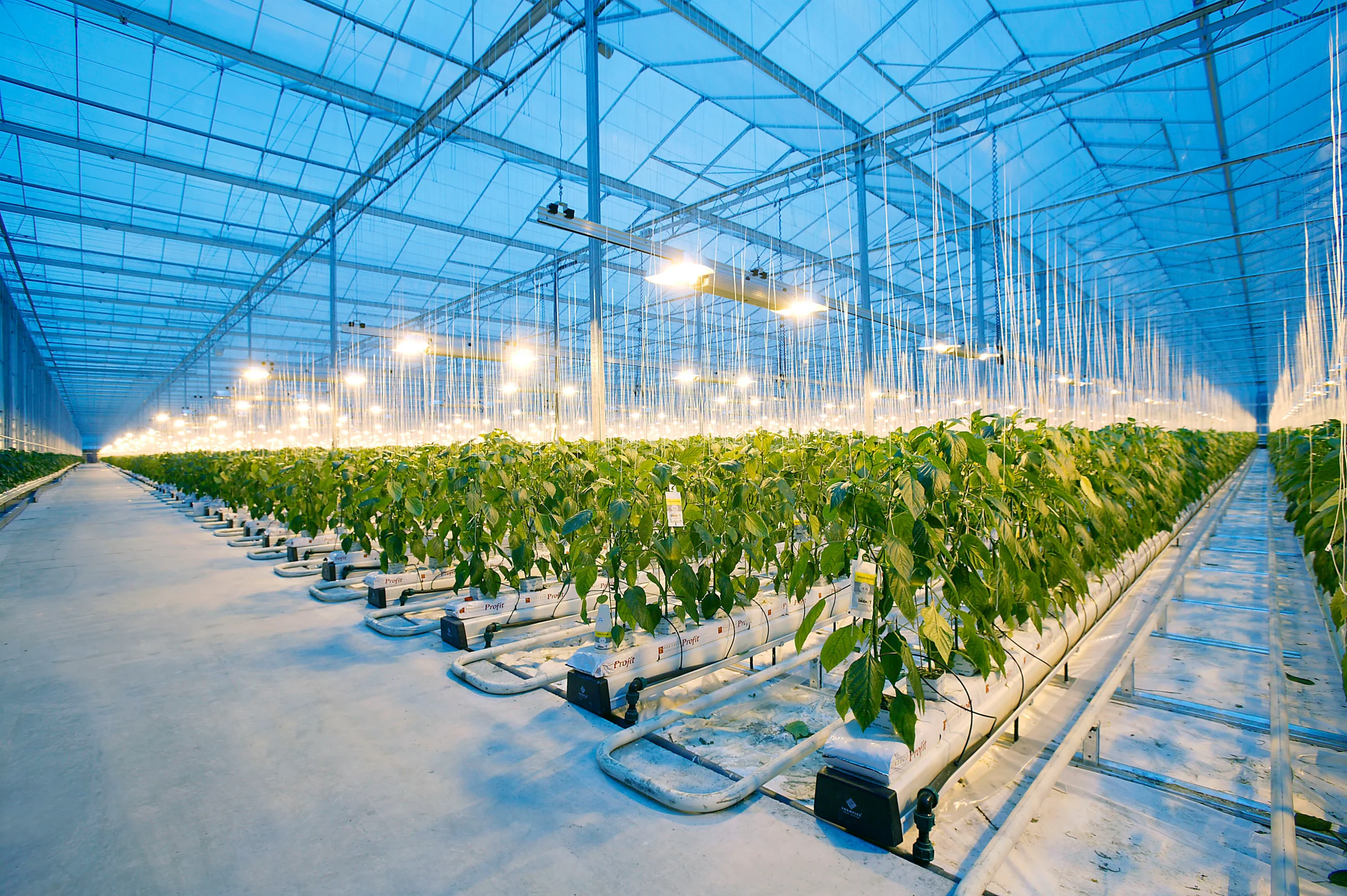 Autonomous greenhouse
The impact of IoT in agriculture is so serious, that it can completely change the economy of the whole country. This is what happened with the Netherlands, a small densely populated lowland country that today ranks second among veggie exporters in the world.
The secret is in the innovative approach to agricultural spaces and broad use of IoT in agriculture processes. The majority of farmlands in the Netherlands are covered by glass, and vegetables are grown in autonomous greenhouses. The Dutch use connected technology, sensors to monitor CO2 level, humidity, LED light, plant health and data analytics to maintain a sustainable environment in the greenhouses. Thus, they harvest 10 times the average yield from a traditional open field.
Apart from unrivaled efficiency, growing food in smart greenhouses is clean as it requires much less water and pesticides.
Autonomous greenhouse
The impact of IoT in agriculture is so serious, that it can completely change the economy of the whole country. This is what happened with the Netherlands, a small densely populated lowland country that today ranks second among veggie exporters in the world.
The secret is in the innovative approach to agricultural spaces and broad use of IoT in agriculture processes. The majority of farmlands in the Netherlands are covered by glass, and vegetables are grown in autonomous greenhouses. The Dutch use connected technology, sensors to monitor CO2 level, humidity, LED light, plant health and data analytics to maintain a sustainable environment in the greenhouses. Thus, they harvest 10 times the average yield from a traditional open field.
Apart from unrivaled efficiency, growing food in smart greenhouses is clean as it requires much less water and pesticides.
 Urban agriculture
Today’s ag startups claim you don’t even need fields to grow food efficiently in a smart greenhouse. Companies like Infarm or Jones Food offer you to install autonomous greenhouses in an urban environment such as a supermarket, private garden or even a pharma plant. Thanks to hydroponic technology, smart vertical gardens are soilless—plants grow in nutritious solvents controlled and maintained by sensor technology and don’t require traditional irrigation, which makes them resource-efficient.
Considering the unbeatable benefits, environmental friendliness and agility of autonomous greenhouses, they could become the solution to the challenges farming confronts, and thus build the future of IoT in agriculture.
Urban agriculture
Today’s ag startups claim you don’t even need fields to grow food efficiently in a smart greenhouse. Companies like Infarm or Jones Food offer you to install autonomous greenhouses in an urban environment such as a supermarket, private garden or even a pharma plant. Thanks to hydroponic technology, smart vertical gardens are soilless—plants grow in nutritious solvents controlled and maintained by sensor technology and don’t require traditional irrigation, which makes them resource-efficient.
Considering the unbeatable benefits, environmental friendliness and agility of autonomous greenhouses, they could become the solution to the challenges farming confronts, and thus build the future of IoT in agriculture.
Sensors
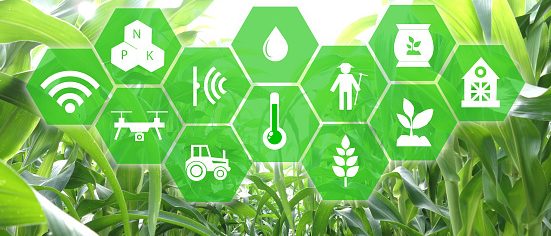 There’s a wide range of IoT sensors used in agriculture, including soil, humidity, moisture, light, air temperature, CO2, solar energy sensor, and many others. Installed throughout the fields, in the IoT-based monitoring systems, on smart agriculture vehicles and weather stations, sensors continuously collect data and bring visibility and control into agriculture operations.
The combination of data coming from diverse sensors allows farmers to build crop models and predict how crops will grow in the given conditions, integrate precision farming practices, create harvesting strategies, etc..
There’s a wide range of IoT sensors used in agriculture, including soil, humidity, moisture, light, air temperature, CO2, solar energy sensor, and many others. Installed throughout the fields, in the IoT-based monitoring systems, on smart agriculture vehicles and weather stations, sensors continuously collect data and bring visibility and control into agriculture operations.
The combination of data coming from diverse sensors allows farmers to build crop models and predict how crops will grow in the given conditions, integrate precision farming practices, create harvesting strategies, etc..
Gyroscope and image
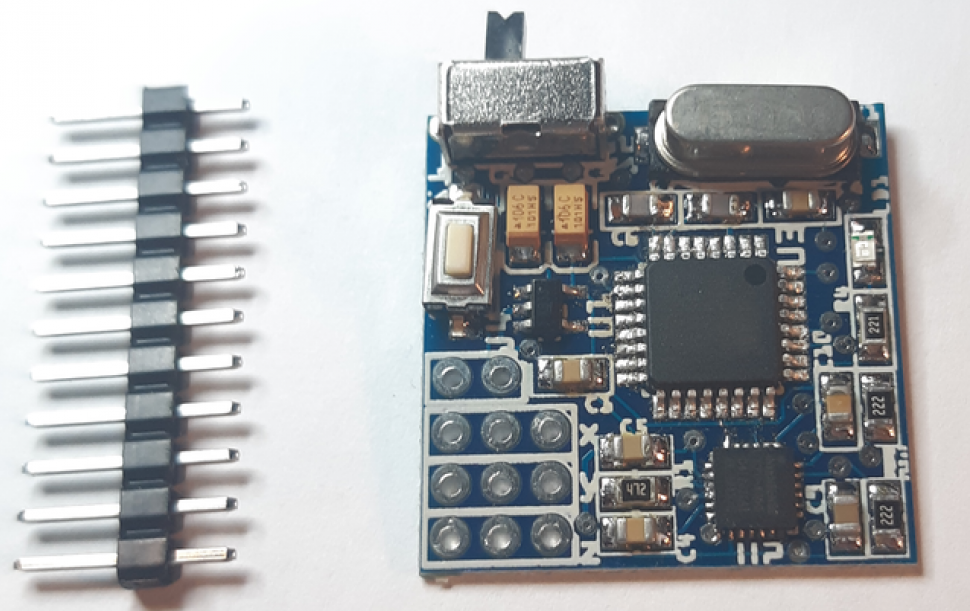 Gyroscope and image sensors are widely used in robots, autonomous vehicles and drones for field health monitoring, geomapping and land analytics, autonomous irrigation and crop fertilization.
Moisture and temperature
Gyroscope and image sensors are widely used in robots, autonomous vehicles and drones for field health monitoring, geomapping and land analytics, autonomous irrigation and crop fertilization.
Moisture and temperature
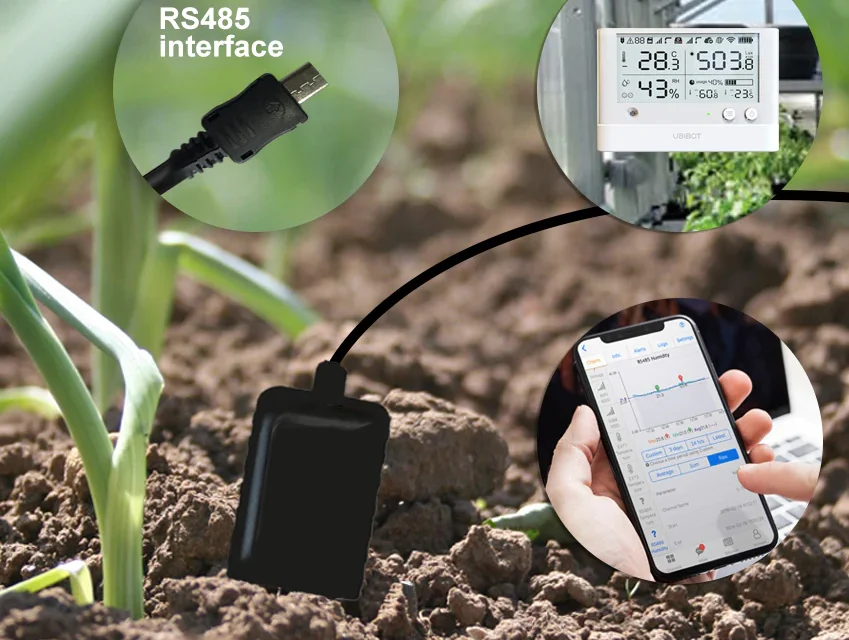 Another example is a set of moisture sensors by Cropx. These sensors provide automated moisture, temperature and EC monitoring and enable efficient and wasteless irrigation. This is also a good example of how using IoT in agriculture can reduce water consumption.
Near infrared and EC
Another example is a set of moisture sensors by Cropx. These sensors provide automated moisture, temperature and EC monitoring and enable efficient and wasteless irrigation. This is also a good example of how using IoT in agriculture can reduce water consumption.
Near infrared and EC
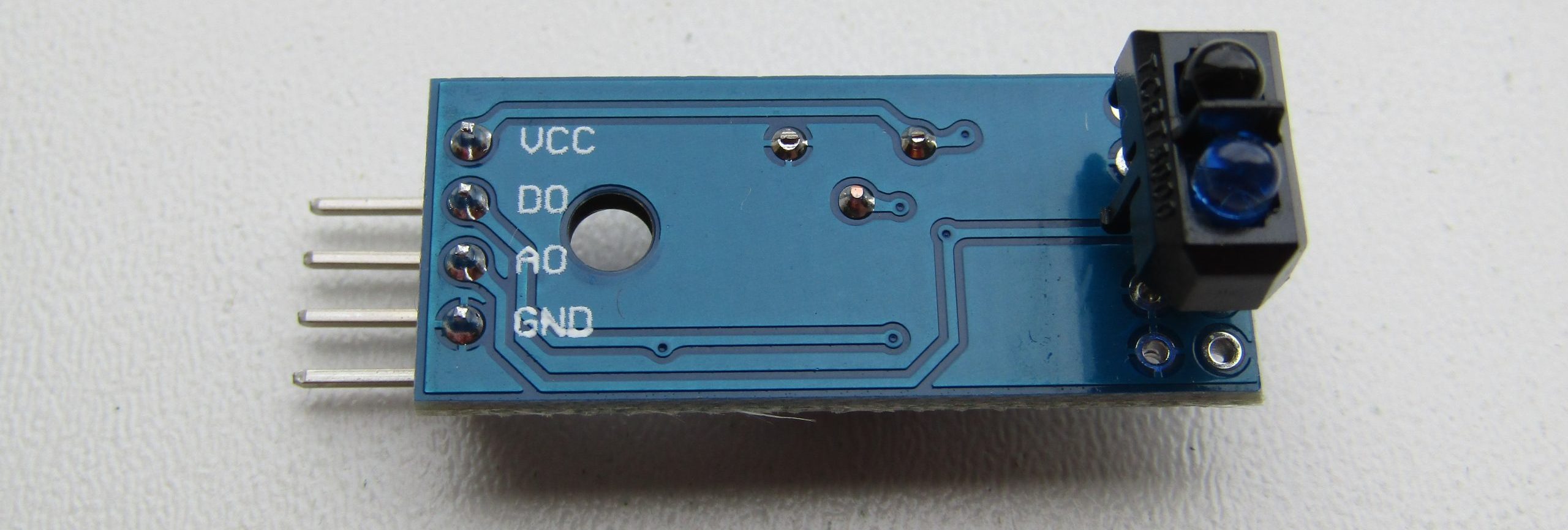 One more Red Dot awardee, SoilCares is a good example of how IoT can be used in agriculture at a small scale. This portable soil scanner uses near-infrared and EC sensing for real-time soil diagnostics and recommendations on ground fertilizing and treatment. IoT agriculture sensors used by the scanner send information to the data processing center, which sends the insights right to the farmer’s phone.
One more Red Dot awardee, SoilCares is a good example of how IoT can be used in agriculture at a small scale. This portable soil scanner uses near-infrared and EC sensing for real-time soil diagnostics and recommendations on ground fertilizing and treatment. IoT agriculture sensors used by the scanner send information to the data processing center, which sends the insights right to the farmer’s phone.
 Gyroscope and image sensors are widely used in robots, autonomous vehicles and drones for field health monitoring, geomapping and land analytics, autonomous irrigation and crop fertilization.
Moisture and temperature
Gyroscope and image sensors are widely used in robots, autonomous vehicles and drones for field health monitoring, geomapping and land analytics, autonomous irrigation and crop fertilization.
Moisture and temperature
 Another example is a set of moisture sensors by Cropx. These sensors provide automated moisture, temperature and EC monitoring and enable efficient and wasteless irrigation. This is also a good example of how using IoT in agriculture can reduce water consumption.
Near infrared and EC
Another example is a set of moisture sensors by Cropx. These sensors provide automated moisture, temperature and EC monitoring and enable efficient and wasteless irrigation. This is also a good example of how using IoT in agriculture can reduce water consumption.
Near infrared and EC
 One more Red Dot awardee, SoilCares is a good example of how IoT can be used in agriculture at a small scale. This portable soil scanner uses near-infrared and EC sensing for real-time soil diagnostics and recommendations on ground fertilizing and treatment. IoT agriculture sensors used by the scanner send information to the data processing center, which sends the insights right to the farmer’s phone.
One more Red Dot awardee, SoilCares is a good example of how IoT can be used in agriculture at a small scale. This portable soil scanner uses near-infrared and EC sensing for real-time soil diagnostics and recommendations on ground fertilizing and treatment. IoT agriculture sensors used by the scanner send information to the data processing center, which sends the insights right to the farmer’s phone.
